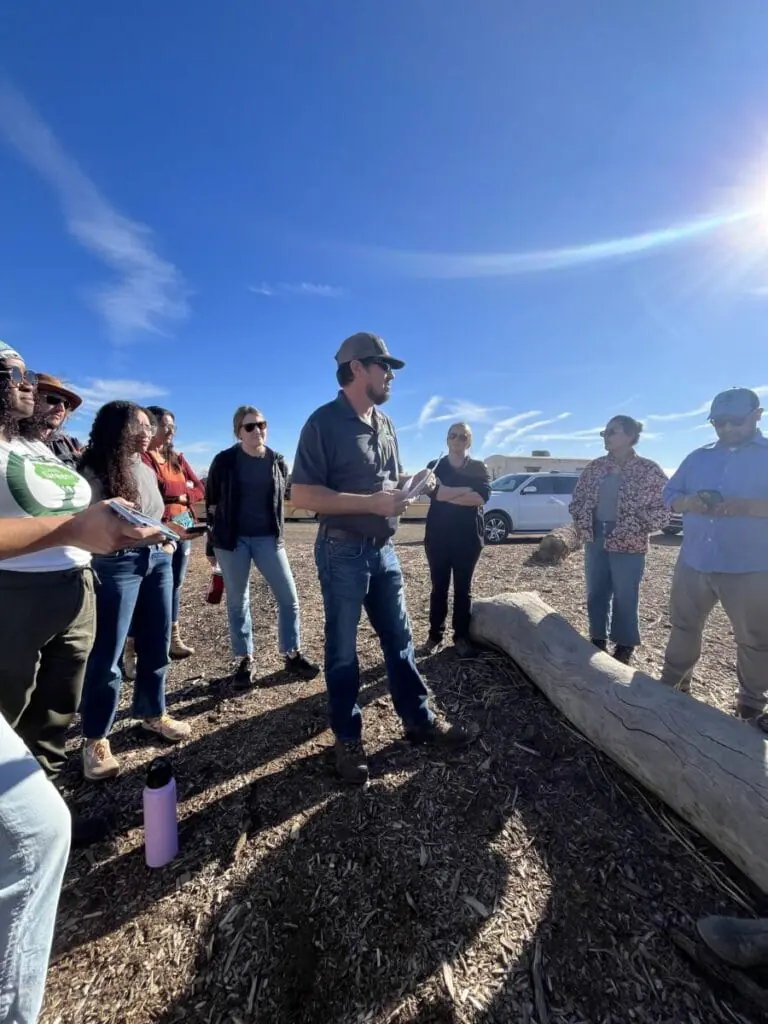By Kali Ransom, ASU sustainable food systems graduate student

Understanding green waste
“Green waste” refers to organic waste that is generated from plants and other organic materials. While green waste from some sources, such as kitchen scraps, is easy to compost; other materials, such as tree stumps, branches and other woody yard waste are sizable and take longer to decompose, making their disposal a challenge. That's where CTS Greenwaste Recycling – a small company in Mesa, Arizona that our Sustainable Food Systems Masters cohort recently visited – comes in: providing an innovative solution for managing and recycling green waste.
For an affordable fee, CTS Greenwaste Recycling offers a comprehensive service that takes care of recycling green waste, ensuring that it is repurposed in an environmentally friendly manner. With an emphasis on regenerative organic recycling, they are dedicated to finding sustainable alternatives to traditional waste disposal methods.
How green waste gets recycled
At CTS, husband and wife duo Alicia Ellis and Justin Perry utilize time and the thermodynamic properties of the green waste itself to turn woody material into a workable soil amendment. When the green waste first arrives at their facility, it is screened for non-compostable material. The green waste is then allocated amongst grid-style lots. This layout ensures adequate airflow as the green waste sits, allowing the moisture levels in the content to drop. Once the moisture levels drop to 30-40%, the green waste is screened once more, this time using a metal detector, where it then proceeds through an on-site grinder. Following this step, the ground material is brought to farmland, where the soil amendment is applied to the fields. A unique aspect of green waste recycling at this facility is that the green waste does not go into the fields as a finished product. The temperature of the green waste piles is kept low before the application day so it will finish decomposing in the fields. This is in an attempt to ensure as much carbon gets and stays in the fields as possible.
The role of recycling in organic farming/landscaping
There are multiple benefits to recycling green waste:
1.) Landscapers (CTS's most common supplier of green waste) save money on disposal fees
2.) Green waste gets diverted from the landfill
3.) Plant matter is reincorporated into the soil, as a rich soil amendment
Along with these benefits, by taking advantage of this natural soil amendment, farmers are able to reduce the necessity for synthetic fertilizers. CTS staff have also noted that due to the volume of green waste (which becomes the soil amendment), farmers are able to desalinate their fields (a key issue in the desert), bring balance to the soil pH, and have healthier crops. Soil water retention, another key issue in the desert climate, has been noted to increase with the application of their soil amendment as well.
Sustainable solutions: The future of organic waste recycling
By utilizing simple techniques, CTS is able to turn what would have been trash into a rich soil amendment while simultaneously minimizing the environmental impacts of green waste. Not only does this approach aid in waste reduction, but it also supports the green economy and recycling trends. The management of green waste provides an opportunity to recover bioactive compounds and develop a functional product with beneficial effects on human and plant health (i.e. an organic soil amendment), supporting sustainable practices in the food industry. If you are interested in adopting CTS’s regenerative approach to green waste, you can contact them at info@CTSGreen.com to learn more.
This blog is part of a series from the Swette Center's annual Arizona Food and Farm Immersion, a required course in their two graduate programs. Students tour the state, meeting with farmers, ranchers, entrepreneurs, government staff, and non-profit leaders.